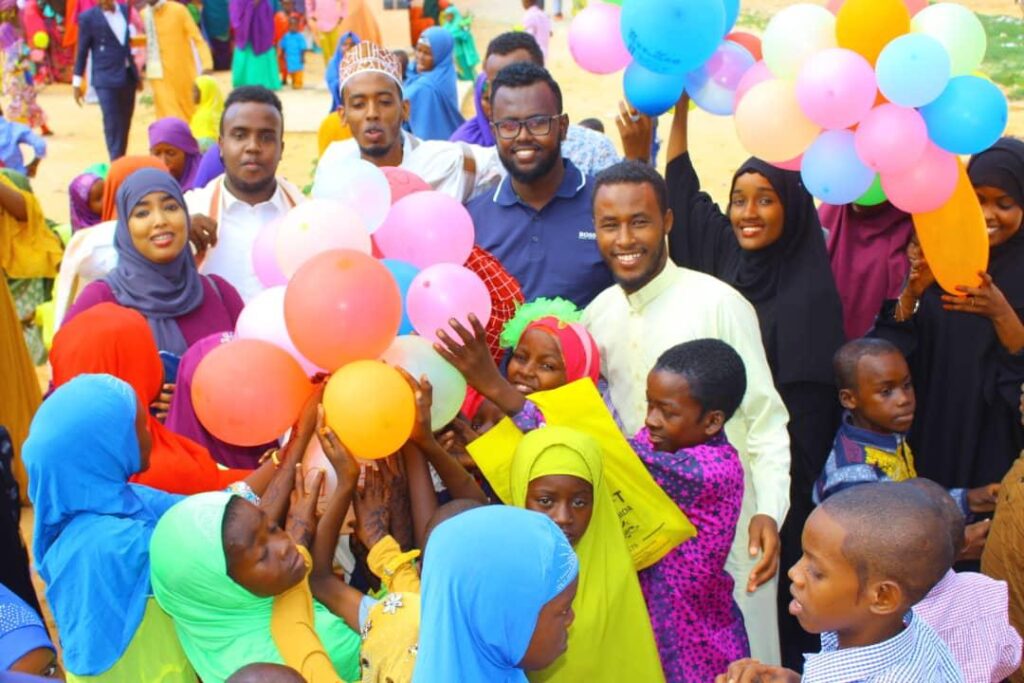Eid al-Adha, the Feast of Sacrifice, holds profound spiritual and cultural significance for Somalis worldwide. While the core rituals of prayer, sacrifice, and charity remain steadfast, the younger generation in Somalia and its diaspora are finding innovative ways to celebrate, adapt, and ultimately preserve these cherished traditions.
Far from being passive recipients of heritage, Somali youth are actively shaping the future of Eid, blending age-old customs with contemporary expressions.
Somali Youth: Embracing Modernity While Honoring Roots
Somali youth stand at the intersection of tradition and modernity.
They are digitally native, globally aware, yet deeply connected to their cultural roots.
This duality is vividly reflected in their Eid al-Adha celebrations.
They are not abandoning the past but rather enriching it, ensuring that the spirit of Eid continues to resonate with new generations.

Digital Engagement: Connecting Across Continents
One of the most striking ways Somali youth are influencing Eid is through digital platforms.
Social media, messaging apps, and video calls have become integral to the celebration.
Especially for the vast Somali diaspora.
- Virtual Greetings: “Eid Mubarak” messages, often accompanied by vibrant photos and short videos, flood social media feeds, connecting families and friends separated by distance. This digital exchange reinforces bonds and ensures no one feels left out.
- Sharing Moments: Youth actively share snippets of their Eid preparations – from new outfits to elaborate food spreads and family gatherings. This creates a collective sense of celebration and allows for cultural exchange and appreciation.
- Online Qurbani Initiatives: Many young Somalis, particularly those living abroad, utilize online platforms to facilitate their Qurbani (sacrifice), ensuring that meat reaches needy families in Somalia. This blend of technology and charity makes giving more accessible and transparent.
Fashion Evolution: A Nod to Heritage with a Modern Twist
Eid al-Adha is synonymous with new clothes, and Somali youth are at the forefront of evolving Eid fashion. While traditional attire like the dirac for women and macawis or khamiis for men remain popular, young designers and fashion enthusiasts are introducing modern interpretations.
- Contemporary Silhouettes: Traditional fabrics and patterns are being incorporated into more contemporary cuts, modest dresses, and stylish co-ord sets.
- Vibrant Colors & Accessories: Youth embrace bold colors, intricate embroidery, and statement accessories that reflect both Somali aesthetics and global fashion trends.
- Personal Expression: Eid fashion becomes a canvas for personal expression, allowing youth to celebrate their identity in a way that is both culturally rooted and individually stylish.

Culinary Creativity: New Flavors, Old Traditions
The Eid feast is a cornerstone of the celebration, and Somali youth are actively involved in its preparation. While classic dishes like bariis iyo hilib (rice and meat), sambusa, and halwa are staples, there’s a growing interest in:
- Experimentation: Young cooks might experiment with new spices, presentation styles, or even fusion dishes that incorporate elements from other cuisines while retaining a distinctly Somali essence.
- Shared Cooking: Eid cooking often becomes a communal activity, with younger family members learning recipes from elders, ensuring the transmission of culinary heritage.
- Food Blogging/Vlogging: Many young Somalis share their Eid recipes and cooking processes online, inspiring others and showcasing the richness of Somali cuisine to a wider audience.

Community & Charity: The Enduring Spirit of Giving
The essence of Eid al-Adha lies in sacrifice and sharing. Somali youth are deeply committed to these values, often initiating or participating in charitable endeavors.
- Youth-Led Initiatives: Young people organize local charity drives, collect donations, and volunteer to distribute food and gifts to less fortunate families within their communities.
- Awareness Campaigns: Leveraging social media, they raise awareness about the needs of vulnerable populations in Somalia and encourage others to contribute to humanitarian efforts during Eid.
- Intergenerational Collaboration: While often leading new initiatives, youth frequently collaborate with older community members and established organizations, bridging generational gaps in their philanthropic efforts.
Challenges
Despite the vibrant engagement, Somali youth also navigate challenges such as economic hardships, displacement, and the influence of globalization.
However, their approach to Eid demonstrates remarkable adaptability.
They find ways to celebrate meaningfully, whether in bustling urban centers, refugee camps, or distant diaspora communities.
Often creating new traditions that reflect their unique circumstances while honoring the core values of the holiday.


